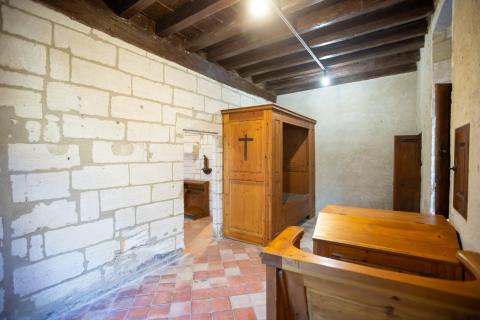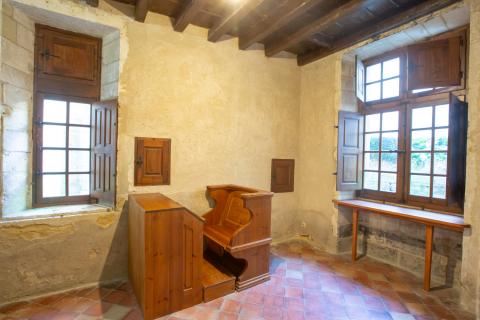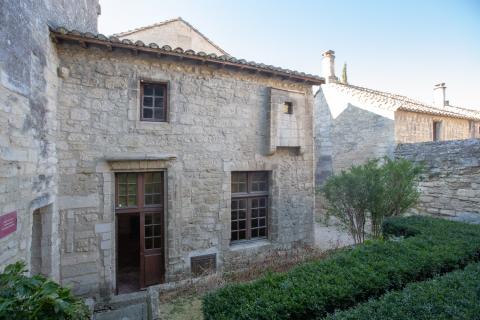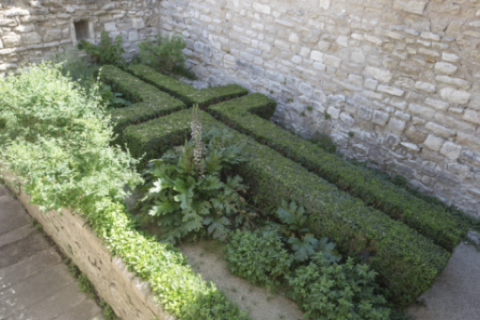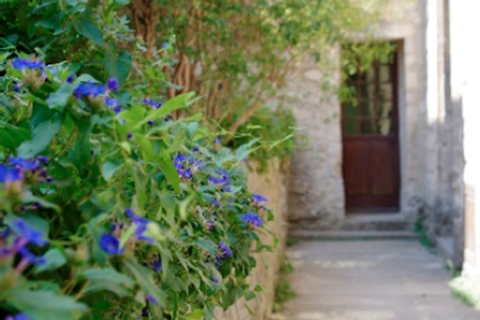The Carthusian fathers’ cells: EXAMPLE OF A CELL
The Carthusian monks spent most of their time in their cells, doing their intellectual, physical and manual work there, praying eating and sleeping. At La Chartreuse de Villeneuve you can visit one typical cell renovated based on the available documentary research.
Grand Cloister ambulatory, called cloister of the dead. Cell doors opened on to this cloister or onto Saint John cloister. Each cell had a letter painted on the lintel.
Next to the door into the cell was a small higher wooden door is where meals entered the cell. The server monk brought meals to the fathers in their cells. The passage for the meals was built at an angle so as not to see inside or talk, even with sign language, when passing the meal.
Each cell had several rooms. Above you see the room used for manual work, a constant occupation of Carthusian monks. They could cut wood, make small objects and other tasks. Carpentry was a longstanding tradition in the Carthusian order.
Other rooms included the Ave Maria, a small space the monk entered to further symbolise his distance from the outside world, where the monk prayed to the Virgin Mary upon entering and exiting. There was also a small bedroom called a cubiculum for rest and prayer. Monks also had an adjoining garden where they could grow flowers and medicinal herbs.
A stairway led from the room to the balcony where they could see the garden and get fresh air when it was too hot outside or there was bad weather.
Today the restored cells are used for the artists in residence – authors, translators working on plays, directors, choreographers and dancers...


